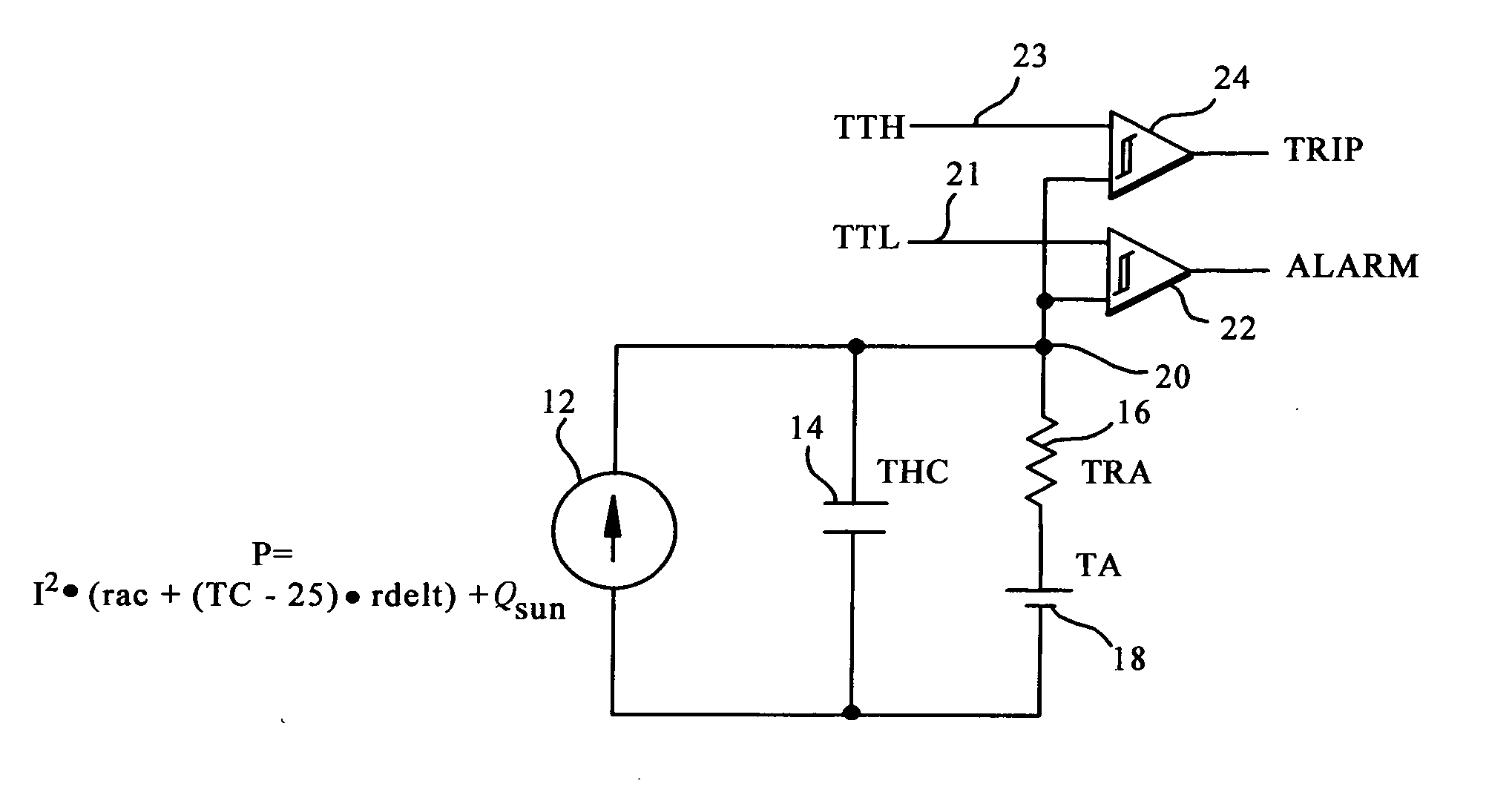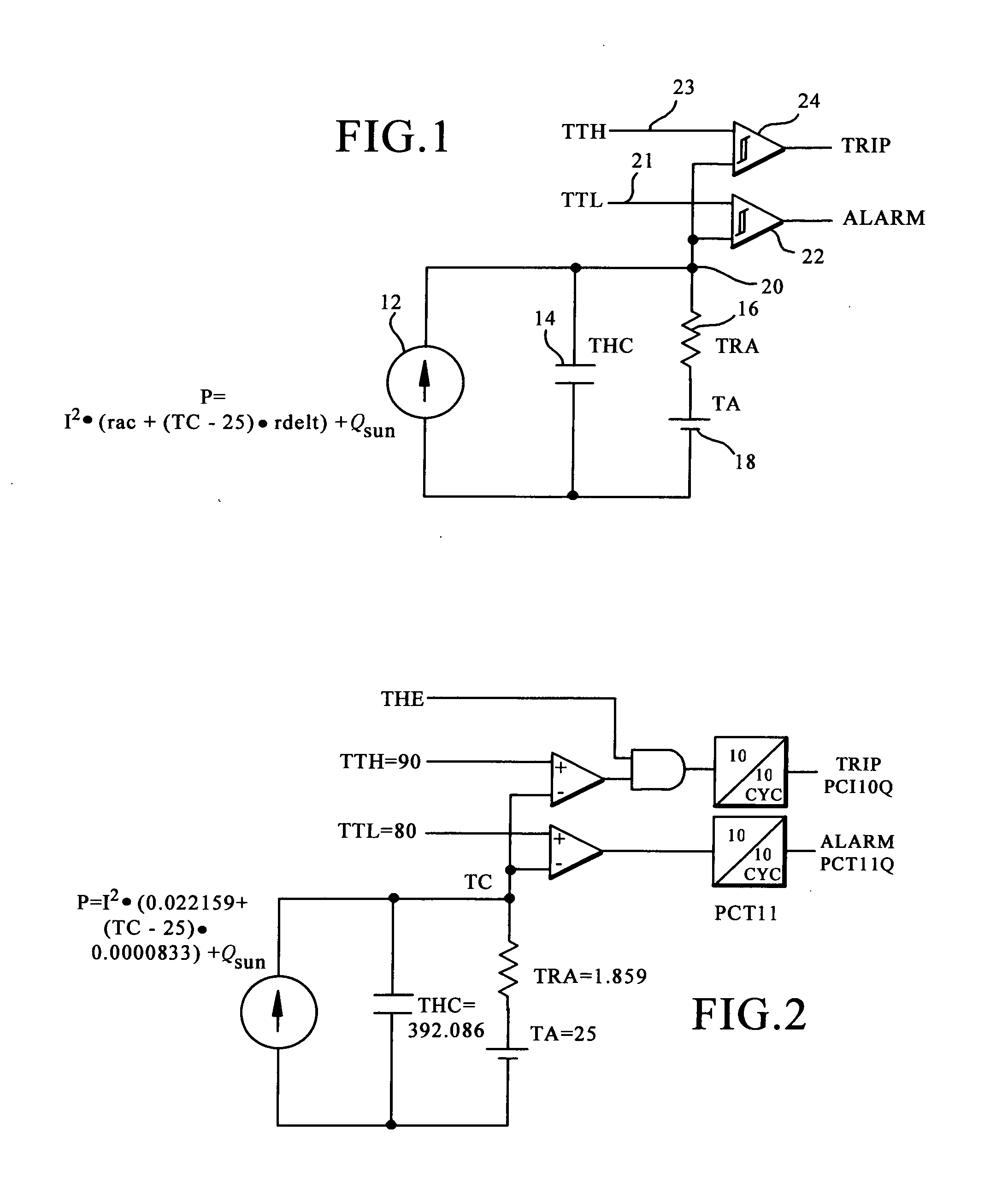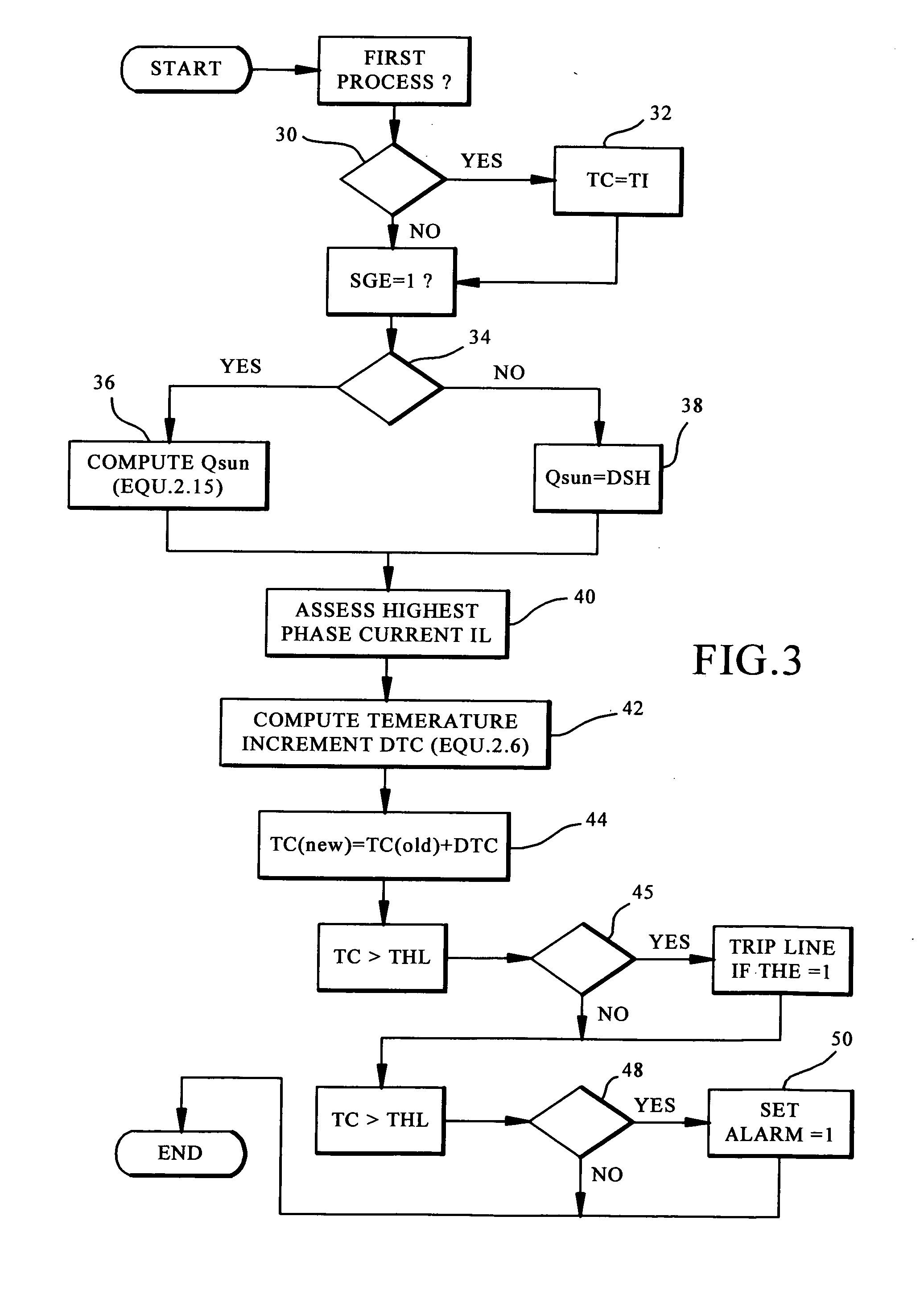Distance protective relay using a programmable thermal model for thermal protection
- Summary
- Abstract
- Description
- Claims
- Application Information
AI Technical Summary
Problems solved by technology
Method used
Image
Examples
Embodiment Construction
As indicated above, use is made of first order thermal models to determine the temperature of electrical conductors, such as for instance the temperature in various parts of an induction motor. These principles are set out in a paper by S. A. Zocholl and Gabriel Benmouyal entitled “Using Thermal Limit Curves to Define Thermal Models for Induction Motors”, Proceedings of the 28th Annual Western Protective Relay Conference, Spokane, Wash., October 2001. The first order thermal model for protection of a power line is expressed as first order differential equation: Power Supplied (P)-Losses=ⅆ(TC)ⅆt(1)
The equations below use the following variables: P=heat power input to the conductor (kW / kft) THC=conductor heat capacity (kJ / ° C. kft) TRA=thermal resistance to ambient (° C. kft / kW) TC=estimated conductor temperature (° C.) TA=ambient temperature (° C.) TI=conductor initial temperature (° C.) I=conductor current (A RMS) rac=AC conductor resistance at 25° C. (Ω / kft) rdelt...
PUM
 Login to View More
Login to View More Abstract
Description
Claims
Application Information
 Login to View More
Login to View More - R&D
- Intellectual Property
- Life Sciences
- Materials
- Tech Scout
- Unparalleled Data Quality
- Higher Quality Content
- 60% Fewer Hallucinations
Browse by: Latest US Patents, China's latest patents, Technical Efficacy Thesaurus, Application Domain, Technology Topic, Popular Technical Reports.
© 2025 PatSnap. All rights reserved.Legal|Privacy policy|Modern Slavery Act Transparency Statement|Sitemap|About US| Contact US: help@patsnap.com



